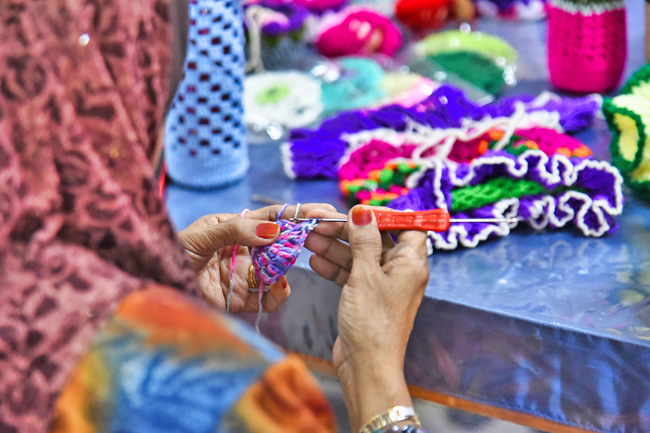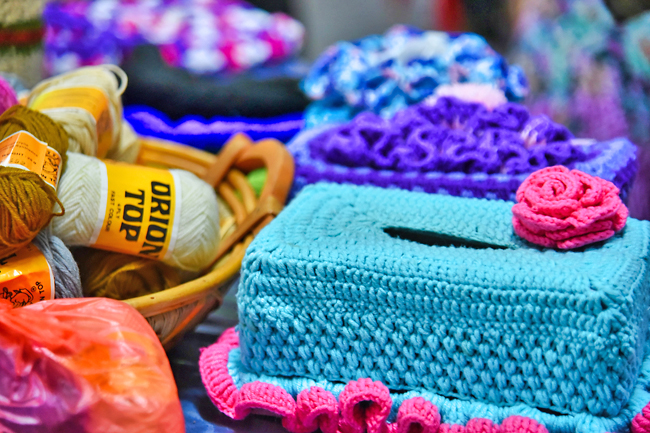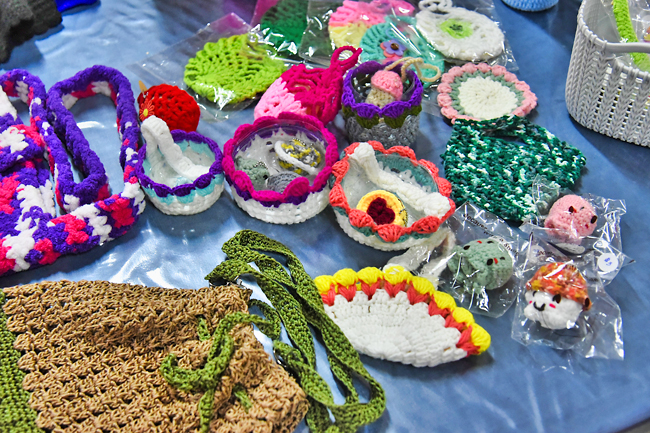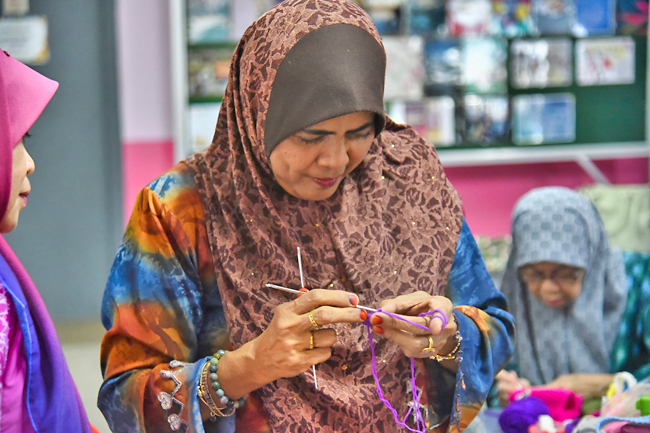Crocheting, an ancient art form, whispers tales of resilience and creativity through the nimble dance of fingers and yarn. Its origins remain shrouded in folklore, from 16th Century European tambour embroidery to ancient Chinese and Egyptian handwork.
Wherever it began, simple loops evolved into expressive art, spreading across the globe.
By the 19th Century, crochet transitioned from necessity to adornment, gracing European parlours with lace cuffs, doilies, and elegant tapestries.
More than a decoration, it was a lifeline during hardship, passed down through generations – mother to daughter, aunt to niece – each stitch preserving stories and tradition.
The craft’s migration to Southeast Asia came with the winds of trade and colonisation, carried by sailors, merchants, and travellers who exchanged not just goods but traditions and techniques.
In Brunei, where cultural diversity thrives under the canopy of rainforests and the shadow of golden-domed mosques, crocheting blossomed into a practice imbued with local flavour.
Initially seen in practical items – market bags, mats, and netting for fishing – crocheting slowly melded with regional aesthetics.
Today, Bruneian crafters infuse the art with intricate designs inspired by their heritage, blending the old with the new. Traditional motifs find new life in modern wearables and home décor, and crochet groups knit together not just yarn, but community.




In a time when digital devices dominate, crocheting in Brunei is a rebellion against the ephemeral, a stitch-by-stitch return to tradition. To pick up a crochet hook here is to engage in a quiet revolution, a link to the past that sways with each knot and loop, binding generations in stories told through threads. With this current era, mass production has stolen the spotlight, but the delicate art of crochet still weaves quietly in the background, cherished by those who see the value in handmade treasures.
This timeless craft, once a necessity and now a labour of love, has endured not just through the nimble fingers of artisans but through the passion of communities who refuse to let it slip into obscurity.
One such guardian of the craft is Sriraya binti Borhan, a woman whose dedication breathes life into yarn and tradition alike.
As the leading instructor of a youth crochet workshop, Sriraya has become a bridge between past and present, passing down not just techniques but stories spun with each loop and stitch.
I had the privilege of joining one of her workshops, a space filled with quiet concentration and the soft shuffle of yarn. There, Sriraya moved through the basics of crochet with an ease born of years of practice.
Her eyes lit up as she spoke of her earliest memories – small hands guided by her grandmother’s, the warmth of homemade blankets, and the joy that came from creating something uniquely her own.
“I first learned to weave crochet during my teenage years, guided by my grandparents,” she reminisced, a fond smile playing on her lips. “Even as a child, I was fascinated by how a single strand of yarn could be transformed into such intricate designs.”
Sriraya’s passion for crochet continued well into her later years, inspiring her to use the knowledge and skills she had acquired to teach others who shared her enthusiasm for the craft.
As crochet demands mastery of foundational techniques and a significant amount of patience, with each piece meticulously created stitch by stitch, she emphasised the importance of learning the basics. One of the first lessons she taught was how to properly weave the chain that serves as the base for all types of patterns and designs found in crochet.
“Once the chain is completed, only then can we start crafting the patterns and designs,” she explained. “These can vary depending on the type of crochet one is aiming for.
Traditional crochet tends to be stricter with certain patterns, while modern crochet allows more creative freedom.”
She added that each stitch in the crochet chain plays a crucial role in the overall design. Even minor variations in stitch type, tension, or yarn thickness can dramatically change the final look and feel of the piece.
Sriraya also noted how traditional crochet was once focused on creating simple household items like tablecloths. However, the art form has since evolved, with modern crochet embracing more imaginative projects, from hats and wearable items to adorable plush toys and keychains.
Having learned the art of crochet in the traditional way, Sriraya has continued to build and refine her skills through online learning platforms.
“I initially learned more about crochet through Rumah Tangga workshops, but unfortunately, there haven’t been any similar workshops held since,” she said. “To supplement this, I turned to sites like YouTube to explore other forms of crochet and expand my knowledge.”
While traditional designs remain at the heart of crochet, imaginative weavers like Sriraya are breathing new life into the craft. They experiment with bold colour palettes, incorporate unconventional materials, and create patterns that reflect modern fashion and artistic trends.
In many ways, crochet acts as a bridge woven tightly between generations, preserving age-old skills while nurturing new ideas and creative expression. Having dedicated her life to the craft, Sriraya believes crochet can benefit people of all ages.
“Crochet can be more than just a hobby that showcases one’s creativity and ingenuity; it can also pave the way for people to earn an income from their creations,” she noted.
Sriraya hopes that more people will recognise the opportunities crochet can offer and see it in a new light. Far from being an outdated pastime, crochet has the potential to evolve and adapt to modern times. – Daniel Lim




